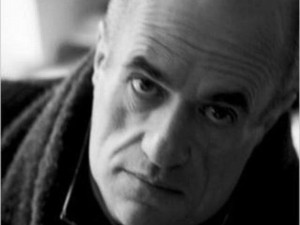‘Jane Austen has mattered more to me than Irish folktales’ : Colm Toibin ( 26 Dec 2015)
(I interviewed Colm Toibin for The Hindu. The original url is: http://www.thehindu.com/features/lit-for-life/colm-toibin-in-conversation-with-jaya-bhattacharji-rose/article8026101.ece. It was published online on 26 December 2015 and in print on 27 December 2015.)
Colm Toibin, author and playwright extraordinaire, talks about how his writing is not a conscious decision but comes from some mysterious place.
He is the author of eight novels, including Brooklyn and Nora Webster and two collections of stories, Mothers and Sons and The Empty Family. His play The Testament of Mary was nominated for a Tony Award for Best Play in 2013. His novels have been shortlisted for the Man Booker Prize three times. His non-fiction includes ‘The Sign of the Cross: Travels in Catholic Europe’ and ‘New Ways to Kill Your Mother: Writers & Their Families.’ He is a Contributing Editor to the London Review of Books, and the Chair of PEN World Voices in New York, and His books have been translated into more than thirty languages. He is the Irene and Sidney B. Silverman Professor of Humanities at Columbia University. Toibin will participate at The Hindu Lit for Life 2016 in Chennai. Excerpts from an interview:
I was writing poetry. Then, at 20, I stopped and for a few years wrote nothing except letters home. Then I wrote a few bad short stories. Then when I was about 26, an idea came to me for a novel. Really, from the moment that happened, I was writing fiction.
Did training as a journalist help you as a writer?
Yes, it gave me a relationship to an audience, a sense that work is written to be read, is an act of communication.
Your fiction has strong women characters who lead ordinary lives. But it is the tough choices they make that mark your fiction as remarkable. Is it a conscious decision to create stories around women?
I think it’s 50-50 men-women. Some novels like The Heather Blazing and The Master are written from the point of view of men. I think writers should be able to imagine anything. I was brought up in a house full of women. Writing never comes from a conscious decision, but always from some mysterious place.
Does writing about women with such sensitivity require much research?
I listened a lot to my mother and her sisters and to my own sisters when I was growing up.
An aspect that stands out in your fiction are the constant discussions you seem to be having with Catholicism and the Church, almost as if you are in constant dialogue with God. It comes across exquisitely in the moral dilemma your characters experience. Is this observation true?
I think that might be a bit high-flown. I work with detail and I often let the large questions look after themselves. But it is important not to be banal, so I allow in some images from religion but I try to control them.
The tiny details that enrich your fiction are very similar to oral storytelling. Has the Irish literary tradition of recording and creating a rich repository of its oral folktales in any way influenced your writing?
Not really. I am a reader, so I have a sense of the rich literary tradition that the novel comes from. When I was a teenager, I was not interested in reading any Irish fiction, so I was devouring Hemingway, Kafka, Sartre, Camus, Henry James. I think Jane Austen, with all her irony and structural control, has mattered to me more than Irish folktales. But I like Irish folktales too.
Who was the storyteller at home and from literature who influenced you the most?
All the women talked a lot, but it was not storytelling in any formal sense.
Your fiction at times feels like a meditation on grief exploring the multiple ways in which people mourn. Why?
My father died when I was 12 and I think this has a serious effect on me. I didn’t think about it for years, almost repressed it. So then it began to emerge in the fiction, almost despite me.
Your characters reappear in your stories like Nora in Brooklyn becomes Nora Webster. Is this part of your attempt at creating a literary Wexford landscape or is it at times convenient to work with characters you are already comfortable and familiar with?
I like the idea of creating a fictional landscape that is slowly growing or becoming more complete. Thus in Nora Webster, there are characters from The Heather Blazing, The Blackwater Lightship, Brooklyn and some short stories, most notably The Name of the Game.
6 January 2016


No Comments